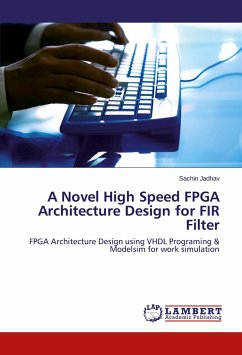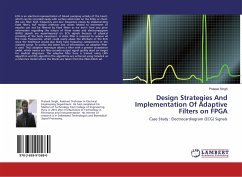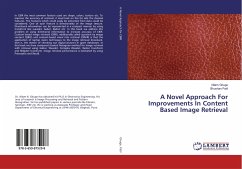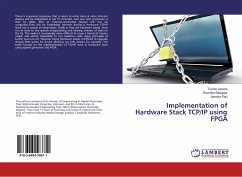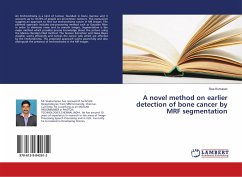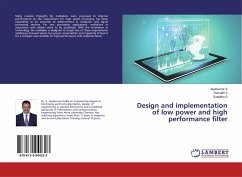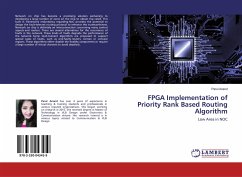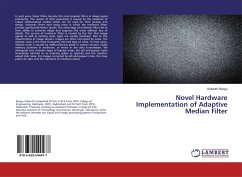
Novel Hardware Implementation of Adaptive Median Filter
Versandkostenfrei!
Versandfertig in 6-10 Tagen
27,99 €
inkl. MwSt.

PAYBACK Punkte
14 °P sammeln!
In past years, linear filters became the most popular filters in image signal processing. The reason of their popularity is caused by the existence of robust mathematical models which can be used for their analysis and design. However, there exist many areas in which the nonlinear filters provide significantly better results. The advantage of nonlinear filters lies in their ability to preserve edges and suppress the noise without loss of details. The success of nonlinear filters is caused by the fact that image signals as well as existing noise types are usually nonlinear. Due to the imperfect...
In past years, linear filters became the most popular filters in image signal processing. The reason of their popularity is caused by the existence of robust mathematical models which can be used for their analysis and design. However, there exist many areas in which the nonlinear filters provide significantly better results. The advantage of nonlinear filters lies in their ability to preserve edges and suppress the noise without loss of details. The success of nonlinear filters is caused by the fact that image signals as well as existing noise types are usually nonlinear. Due to the imperfections of image sensors, images are often corrupted by noise. The impulse noise is the most frequently referred type of noise. In most cases, impulse noise is caused by malfunctioning pixels in camera sensors, faulty memory locations in hardware, or errors in the data transmission. We distinguish two common types of impulse noise; the salt and-pepper noise (commonly referred to as intensity spikes or speckle) and the random-valued shot noise. For images corrupted by salt-and-pepper noise, the noisy pixels can take only the maximum or minimum values.



